One of the keys to integrating social media into an organization is the effective use of third-party tools to post and schedule content while monitoring your efforts across networks. There are countless tools that can be used for these purposes, but here are some of the best that we have found, broken down by social platform and use.
Bit.ly: Track retweets and clicks on your tweets. Useful for identifying supporters and popularity of stories.
Blog Pulse: Track links, keywords and conversations across the blogosphere. Useful for monitoring articles, writers’ conversations and topics.
Co-Tweet: Team management tool for Twitter. Similar to Hootsuite. Standard version now includes Facebook integration.
Disqus: Useful for integrating social media into the comment section of websites. Pulls tweets, links and mentions into the comment field to centralize conversations. Tends to slow down website loading speed.
Facebook Insight: Provides an overview of posts, follower demographics and content popularity.
Google Analytics: A must-install on your web site. Free and invaluable.
Hootsuite: Multiuser Twitter and Facebook manager. Good for scheduling posts, managing conversations and running promotional campaigns with multiple users.
Involver: A full suite of Facebook specific widgets and applications that allow site admins to easily create custom FBML pages, import video, photos, audio, newsletters, contests and other features onto your fan page. The company allows two free applications per page and various paid options.
Klout: Measure the health of your Twitter stream. Provides metrics on your influence, reach.
Listorious: Directory of Twitter users and lists curated by topic and interest. Features real time search and trending topics organized by tag. A good resource for finding communities and industry experts.
Posterous: Flexible publishing platform, similar to Tumblr.
Seesmic: A number of desktop and mobile tools for managing social media.
Social Mention: Social media search engine.
Tweetmeme: Real time aggregator of the most popular links on Twitter. Useful for following top social media stories.
Tweetdeck: Popular tool to manage and see multiple twitter streams and accounts on your desktop.
Tweetreach: Measure the success of your tweets by retweets, influence and sentiment.
Tweetstats: Graph and chart your twitter stream.
Twitcam: Stream live with your web cam as you chat via Twitter.
Twellow.com: Directory of public Twitter accounts.
Twittergrader.com: Free service that grades the effectiveness of your Twitter account based on followers, influence and customizations.
Topsy: Social media and blog search engine.
Twibes: Allows users to create twitter groups, which are then listed in a directory.
Twitterfall.com: Real-time desktop search on keywords and hashtags.
YouTube Insight: Track video views, subscribers’ comments and more.
We Follow: Self-organized directory of Twitter accounts.
Key Facebook Terms and Elements to Know
| Profile page: Your personal presentation and community space. This is where you post information for your friends and followers. You must have a profile page to create other groups and pages on Facebook. | 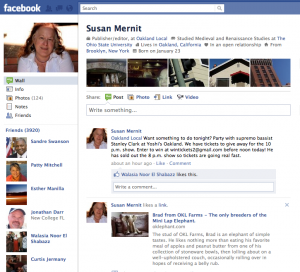 |
| Fan page: Similar to a profile page with slightly altered functionality, fan pages are where news organizations, businesses and public figures establish their identities and post information. |  |
| Group: Public or private networks of users who discuss issues of shared interest. Groups can be invitation only and give administrators control over what information is seen by the entire group. Unlike fan pages, group administrators can add people directly to the group as long as the admin and user are already friends on Facebook. | 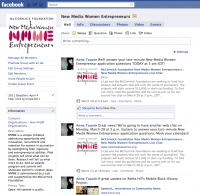 |
| Application (or “app”): A piece of software that can be attached to Facebook to increase functionality. For example, Social RSS is a Facebook app that allows you to automatically add blog content into your Facebook page. | 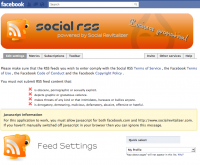 |
| Followers: The fan page’s version of friends. Information that is posted to your wall (your personalized Facebook profile page, see below) is also seen directly in the feeds of all followers. | |
| Friends: Facebook users who have subscribed to receive information you post on the site and who have been given access to more detailed information on your profile. | |
| Insights: The analytics and measuring tool that is included with fan pages. Provides insight into the number of followers, their age, gender, general location and most popular types of content. |  |
| Like/Recommend: A method of showing approval for an article or piece of content. Like buttons are embedded with every post and upload and there are several applications that allow you to post Like buttons on other websites and social networks. When content is Liked by a user, an update appears on the user’s wall with a link extending the potential audience for that content. |  |
| Mentions: A method of formally and directly identifying users and organizations in your posts. Mentioning another user is accomplished by typing the @ symbol before beginning to type a users name. As Facebook sorts through your contacts, it will narrow down the list to the person or organization you are trying to mention. This turns the other user’s name into a link to their profile, increasing his or her visibility, and sends the post to the user’s wall for added promotion there. As a security measure, the person who posts the message must be an existing friend or follower of the person mentioned for the function to be activated. | 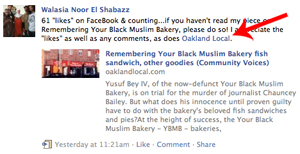 |
| Share: Facebook’s Share feature allows you to republish content from any page onto your own Facebook profile page, effectively “sharing” the content with your followers. | |
| Tags: Descriptive words attached to photos, videos and discussions. The feature is primarily used to tag specific people in photos and videos, acting like a ‘mention’ (see above). | |
| Wall: The section of your profile where your posts appear. This section also allows your followers to interact with you by posting information, liking your posts and leaving comments on your content. | 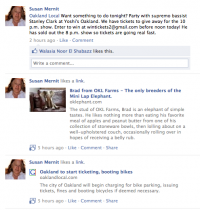 |
Key Twitter Terms and Elements to Know
Username (also known as Twitter handle): Used to identify you on Twitter for replies and mentions. This is created at sign-in. Your Twitter handle is unique and contains fewer than 15 characters.
Tweet, Tweeting, Tweeted: The act of posting a message, often called a “tweet”, on Twitter.
API (Application Programming Interface): Contains all Twitter data, including tweets and basic user information. This is used by developers to build applications that access and manage tweets, such as TweetDeck.
Application (also known as Apps): A third-party application is a product created by a company other than Twitter and used to access tweets and other Twitter data.
Avatar: The personal image uploaded to your Twitter profile in the Settings tab of your account.
Direct Message (also known as DM): Sometimes referred to as simply a “message,” these tweets are private between only the sender and recipient. Tweets become DMs when they begin with “d username” to specify who the message is for.
Favorite: To favorite a tweet means to mark it as one of your favorites by clicking the yellow star next to the message, which helps you find it later.
FF (“Follow Friday”, also known as #FF): On Fridays, Twitter users often suggest who other should follow by tweeting with the hashtag #FF.
Follow: To follow other people on Twitter means to subscribe to their tweets. It is one of the primary functions of Twitter.
Hashtag: The # symbol is used to mark keywords or topics in a tweet. It must appear at the start of a word, and any words must be merged together into one word in order to be searched. Hashtags are created organically by Twitter users.
Lists: A group of other Twitter users that you curate, specific to your account. On Twitter.com, lists are displayed on the right side of your page.
Mention: Identifying another Twitter user by including the @ sign followed directly by his or her username is called a “mention.”
Reply (also known as @Reply or ‘at reply’): Similar to a mention, you can reply to individual users, but keep in mind that these tweets are public and are seen by everyone.
Retweet (also known as RT): The process of forwarding another user’s tweet by clicking on Retweet. This is often used to spread news or share valuable findings on Twitter.
Trending Topics: The most popular subjects on Twitter at any given moment.
Timeline: Facebook Timeline is a new profile life story that allows chronicles a user’s life since the beginning of his/her birth on Facebook and beyond.
Widget: Generally, a box that can be embedded onto another website to display recent tweets that include a particular search word or that are from one particular user. It updates in real-time. A widget is HTML code that can be added into a web page’s HTML code.
